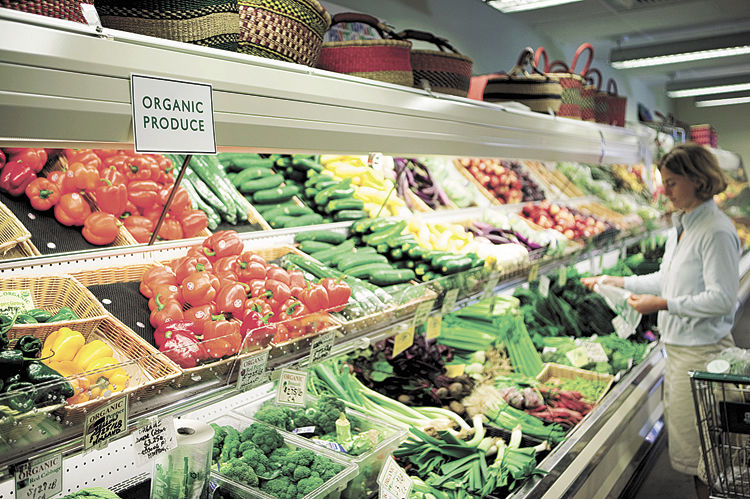How To Eat Healthy On A Budget
Published 8:07 am Friday, January 16, 2015

- How To Eat Healthy On A Budget
By André Arceneaux
It’s 5 o’clock. You leave work, pick up the kids from practice, start homework, do laundry, check homework, break up fights and return emails and text messages. Before you know it, 7 o’clock has arrived. All too soon one of the children asks the one question you didn’t address today: “What’s for dinner?”
br
Researchers state that in 2014, 236,333 fast food restaurants were in business in the United States. With availability like that, chances are you have packed the kids in the car to pick up a burger and fries a few times each month. And who would blame you? With the hustle and bustle of modern life, it is hard to juggle work and family. Throwing healthy food into the mix makes doing so seem downright impossible.
br
br
Debunking The Myths
br
Contrary to popular belief, healthful eating is not difficult and can be cheaper than you think. If you are looking to fatten your wallet and tighten your belt, eating a nutritious, home cooked meal is actually more cost effective than visiting a drive-thru.
br
The U.S. Department of Agriculture states that using a moderately priced plan, the cost of feeding a healthy diet to a family of four can reach $146 to $289 a week. This figure includes snacks, meals and even waste. On average, a typical fast food dinner for that same family will cost approximately $28 per meal. At that rate, a family eating only 5 fast food meals a week would spend $140 versus a family eating 21 healthy meals (plus snacks) spending $146. A $6 difference yields over four times the amount of food.
br
Start With A Well-Stocked Pantry
br
Whether you choose to recognize popular eating options like Meatless Monday or Vegan Till 6, one plan will make healthy eating easier: a well-stocked pantry. With the affordable staple items below, you are sure to find multiple recipe combinations. Acting as a base for many dishes, these choices are indeed, budget friendly.
br
Extra Virgin Olive Oil – This antioxidant rich oil is processed without high heat or chemicals. Its supposed health benefits include digestion aids and anti-cancer properties.
br
Vinegar – Rich in flavor, vinegar adds a punch to any dish with few calories. Some studies show that apple cider vinegar, an antimicrobial, can help with weight loss.
br
Canned Tomatoes – Compared to their fresh counterparts, canned tomatoes are both cheaper and longer lasting. Lycopene, the antioxidant found in tomatoes that reduces cardiovascular disease, is one of the few nutrients that increase when exposed to heat. The extreme heat of canning increases the lycopene exponentially.
br
Quick Cooking Oats – Oatmeal is chock-full of fiber that stays in the stomach longer than other foods, making one feel full. In addition to their digestive properties, oats help lower cholesterol.
br
Quinoa – Known as the world’s most powerful superfood, quinoa is loaded with iron, fiber, lysine, magnesium and riboflavin. This gem is one of the most protein-rich foods you can eat.
br
Lentils – This legume contains more folate than any other unfortified plant food. Use lentils in lieu of beef in chili, tacos or soup for a hearty alternative.
br
Dry Beans – Rich in copper and zinc, these affordable and versatile foods may reduce the risk of diabetes and heart disease.
br
Nuts – Besides protein, most nuts contain Omega-3 fatty acids, Vitamin E and multiple good fats. Health-conscious folks should avoid the honey-roasted and salted varieties and make their own nut butters for sandwiches and snacks.
br
Maple Syrup – This natural alternative to processed sugar and corn syrup contains over 54 antioxidants that can help delay or prevent diseases caused by free radicals. Being rich in zinc, maple syrup boosts the immune system.
br
br
Tips For Healthy Eating
br
Now that the pantry is stocked, here are some tips on how to eat healthy on a budget:
br
Plan meals in advance – People don’t plan to fail. They fail to plan! Planning meals in advance ensures an escape from fast food.
br
Make one weekly shopping trip –Another benefit of planning your meals in advance is knowing exactly what you need from the grocery store. Reserve one day a week to do your shopping. Doing so eliminates trips for “just one or two” items that seem to multiply into things you don’t really need.
br
Make and stick to a budget – When you do make your trip to the grocery store, go with a well-defined budget. Use cash. If you checkout and have to put items back, so be it.
br
Do the math – Sure, boneless, skinless chicken breasts are healthy, but they are also expensive. Instead, buy a whole chicken and break it down yourself.
br
Know your proteins – Eggs, chicken thighs, quinoa, beans and nuts are all excellent forms of protein. Make them the star of your meals. They are cheap, healthy and go a long way.
br
Shop small – Farmer’s Markets, now the rage, offer opportunities across Acadiana. Because these markets carry limited quantities, you typically buy just what you can use. It’s rare that you will eat that 10-pound bag of baby carrots from the chain grocery store. You are throwing money away when you unnecessarily buy too much.
br
Learn to repurpose – Tired of eating your leftover meatloaf? Use it as the base for spaghetti. Roasted chicken giving you the blues? Use it for chicken salad sandwiches. Cooked too many vegetables? Don’t throw them out. Place them in a plastic food storage container in your freezer and use them in a soup.
br
br
The One-Two Punch
br
Unfortunately, eating well is only half of the health equation. Exercise is an important step in any healthy lifestyle. You don’t need to join a fancy gym to see benefits. Low to no cost walking, running, cycling and resistance exercises like Yoga and Pilates are longtime budget-friendly habits.
br
With a little planning and adapting to new ways of thinking about nutritious food, the money you spend now could save your health later. Make small changes and before you know it, your new lifestyle will become second nature.





